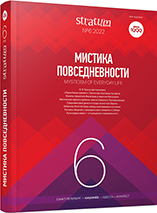Погребальный обряд как элемент духовной культуры населения северной части Буковины в Х—ХIII вв.
Funerary Rite as an Element of the Spiritual Culture of the Population of the Northern Part of Bukovina in the 10th—13th Centuries
Author(s): Igor P. VoznyjSubject(s): History, Archaeology, Ethnohistory, 6th to 12th Centuries, 13th to 14th Centuries
Published by: Издательский дом Stratum, Университет «Высшая антропологическая школа»
Keywords: spiritual culture; burial; burial ground; mound; ground burial; sub-slab burials; sarcophagus; charnel houses; stone circle;
Summary/Abstract: The article discusses one of the components of the spiritual culture of the ancient Rus population of the northern part of Bukovina, namely the funerary rite, since it is the most stable and hereditary features in the development of culture can be traced through it. The local population at the end of the 10th century adhered to the rite of corpse-burning on soil burial grounds. As a result of the processes of the formation of the old Rus state and the annexation of the territory under study, a new type of inhumation burials appears here on the ancient surface under mounds. Such necropolises testify to the presence of Kiev-Rus warriors and members of their families in the study area. With the formation of the powerful Old Rus state, the process of Christianization acquired a wide scope. All investigated burials in the territory of the northern part of Bukovina were Christian. Structurally, the graves of the studied area are divided into five types: simple (without coffins), complex (with coffins), under-slab, in sarcophagus and in charnel houses. On the territory of the northern part of Bukovina, several burial grounds were also found belonging to the Pechenegs, Cumans, and Yatvingian burials, reflecting the military-political or trade processes that took place in the studied territories during the 10th—14th centuries. An analysis of the funerary sites in the studied area shows that the evolution of the funerary rite practiced by the local population followed all-Rus trend and was typical for the entire Old Rus state.
Journal: Stratum plus. Археология и культурная антропология
- Issue Year: 2022
- Issue No: 6
- Page Range: 351-371
- Page Count: 21
- Language: Russian
- Content File-PDF

